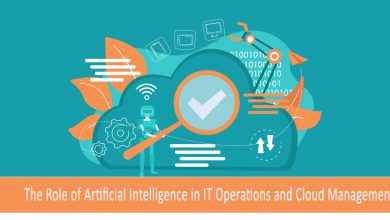Cloud Migration Strategies: Tips for a Smooth Transition
Businesses increasingly use cloud migration strategies to enhance operations, improve scalability, and reduce costs. However, migrating to the cloud can be complex and challenging without the right strategies. This read aims to provide valuable tips about a smooth transition through the cloud, enabling businesses to maximize the benefits of this transformative technology.
Cloud migration strategies refer to transferring an organization’s digital assets, such as applications, data, and IT infrastructure, from servers to a cloud computing environment. This shift allows businesses to use the capabilities of cloud service providers, who offer secure, scalable, and on-demand resources.
Benefits of Cloud Migration
- Scalability: Cloud environments enable businesses to scale their resources depending on demand, ensuring optimal performance and cost efficiency.
- Cost Savings: By migrating to the cloud, organizations can end the need for upfront hardware investments and reduce maintenance costs associated with infrastructure.
- Enhanced Security: Cloud service providers implement security measures and offer data encryption, access controls, and regular backups to protect valuable business information.
- Flexibility and Mobility: Cloud-based applications and data can be accessed from anywhere, anytime, using any internet-connected device, enabling remote work and collaboration.
- Improved Disaster Recovery: Cloud environments provide automated backup and recovery capabilities, minimizing downtime and ensuring business continuity.
Planning the Cloud Migration
Assessing the Current Environment
Before initiating the cloud migration strategies, a comprehensive assessment of the existing IT infrastructure, applications, and data is crucial. This assessment helps identify dependencies, potential roadblocks, and the proper migration approach.
Choosing the Right Cloud Model
There are various cloud deployment models to consider:
- Public Cloud: Infrastructure and services provided to third party vendors and shared among multiple organizations. This model offers cost-effectiveness and scalability.
- Private Cloud: Resources dedicated to a single organization and can host on-premises or managed by a third-party provider. Private clouds provide enhanced security and control.
- Hybrid Cloud: It is a combination of public and private cloud infrastructure. It allows businesses to use the benefits of both models, providing flexibility and customization.
The appropriate cloud model depends on data sensitivity, compliance requirements, and budgetary constraints.
Establishing Clear Objectives
Setting up clear goals and objectives is less for successful cloud migration. Go for specific outcomes you want to achieve, such as improved performance, cost savings, or enhanced collaboration. It helps prioritize tasks and ensures alignment across the organization.
Implementing the Cloud Migration
Creating a Migration Plan
A well-defined migration plan minimizes disruptions and ensures a smooth transition. Consider the following steps when creating your plan:
- Inventory Assessment: Take stock of all applications, data, and infrastructure to determine their compatibility with the cloud environment.
- Dependency Mapping: Identify dependencies between different components and prioritize their migration order.
- Data Migration Strategy: Determine the most suitable approach for transferring data to the cloud.
- Application Migration: Define the migration approach for each application, considering factors such as complexity, dependencies, and user impact.
- Testing and Validation: Thoroughly evaluate migrated applications and data to ensure they function as expected and meet performance requirements.
- Training and Support: Train employees on using the new cloud-based tools and systems effectively. Establish support channels to address any upcoming issues.

Partnering with a Cloud Service Provider
Collaborating with a reputable cloud service provider can significantly simplify the migration process. They bring expertise, experience, and specialized tools to ensure a seamless transition. Consider provider reputation, security measures, compliance certifications, and customer support when selecting a partner.
Security and Compliance Considerations
During the migration process, it is crucial to prioritize security and compliance. Consider the following measures:
- Data Encryption: Encrypt sensitive data both in transit and at rest to safeguard it from unauthorized access.
- Access Controls: Implement robust access controls and user management systems to ensure authorized individuals have appropriate permissions.
- Compliance Certifications: Ensure your chosen cloud service provider complies with relevant industry regulations and standards.
- Regular Auditing: Conduct periodic audits to monitor and assess the security posture of cloud environment.
Post-Migration Considerations
Performance Optimization
Once the migration is complete, optimizing your cloud-based systems’ performance is essential. Consider the following strategies:
- Resource Optimization: Regularly monitor resource usage and adjust allocation to optimize cost efficiency.
- Application Tuning: Fine-tune applications to ensure optimal performance in the cloud environment.
- Auto-Scaling: Implement auto-scaling mechanisms to adjust resources based on demand.
Ongoing Monitoring and Management
Continuous monitoring and managing your cloud infrastructure are critical for maintaining performance and security. Consider the following practices:
- Monitoring Tools: Utilize monitoring tools to track system performance, identify potential bottlenecks, and proactively address issues.
- Regular Updates: Stay up to date with the latest security patches, software updates, and feature releases provided by your cloud service provider.
- Backup and Disaster Recovery: Implement regular data backups and disaster recovery mechanisms to protect against potential data loss or system failures. Explore the Best Ways to Make AI-Generated Digital Art for Free now.
Conclusion
Cloud migration strategies are a transformative process that can revolutionize the way businesses operate. By following the strategies outlined in this article, you ensure smooth transition to the cloud, maximizing the benefits of scalability, cost savings, enhanced security, and flexibility.





